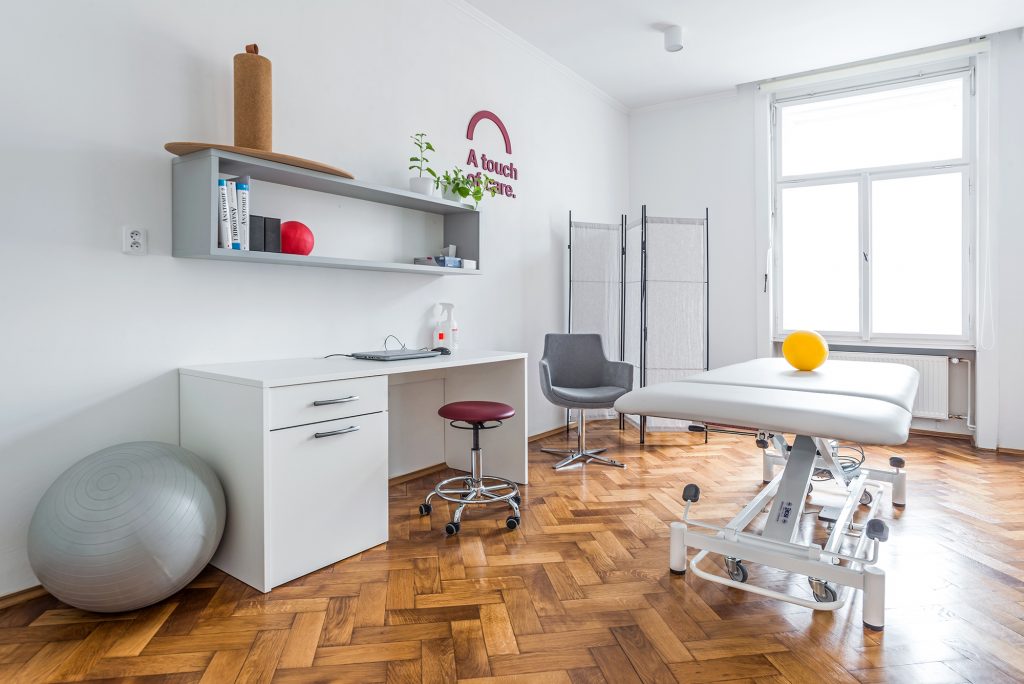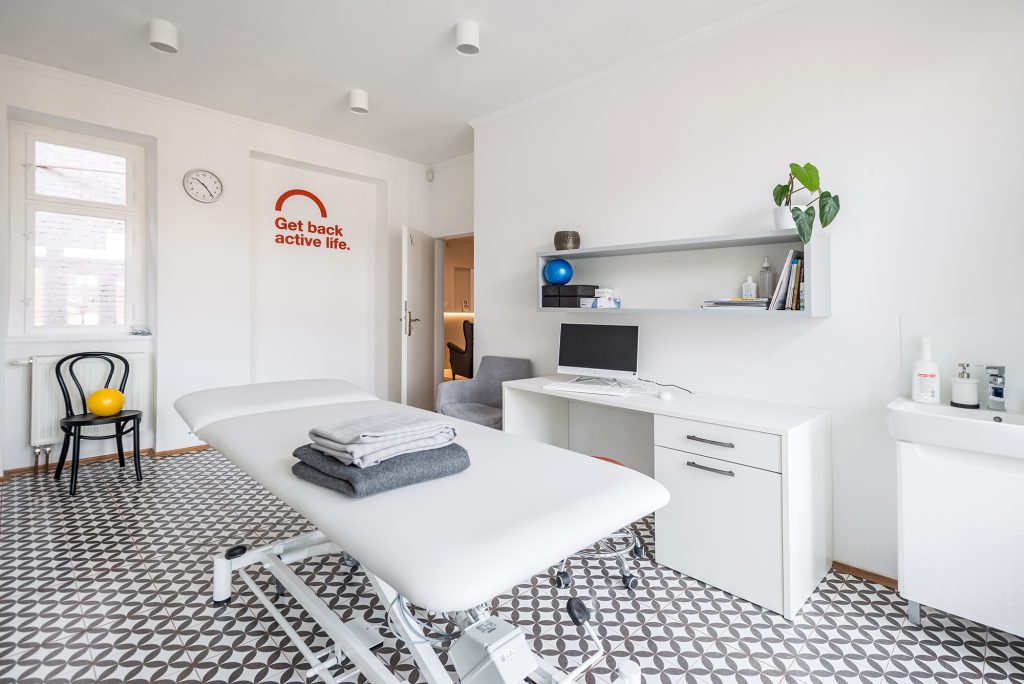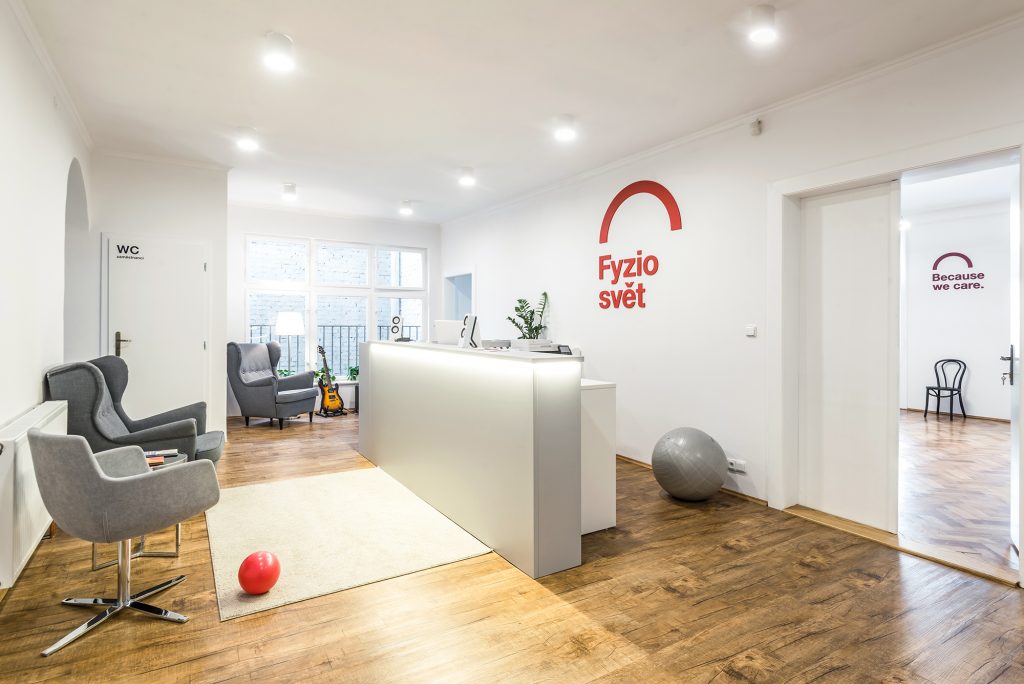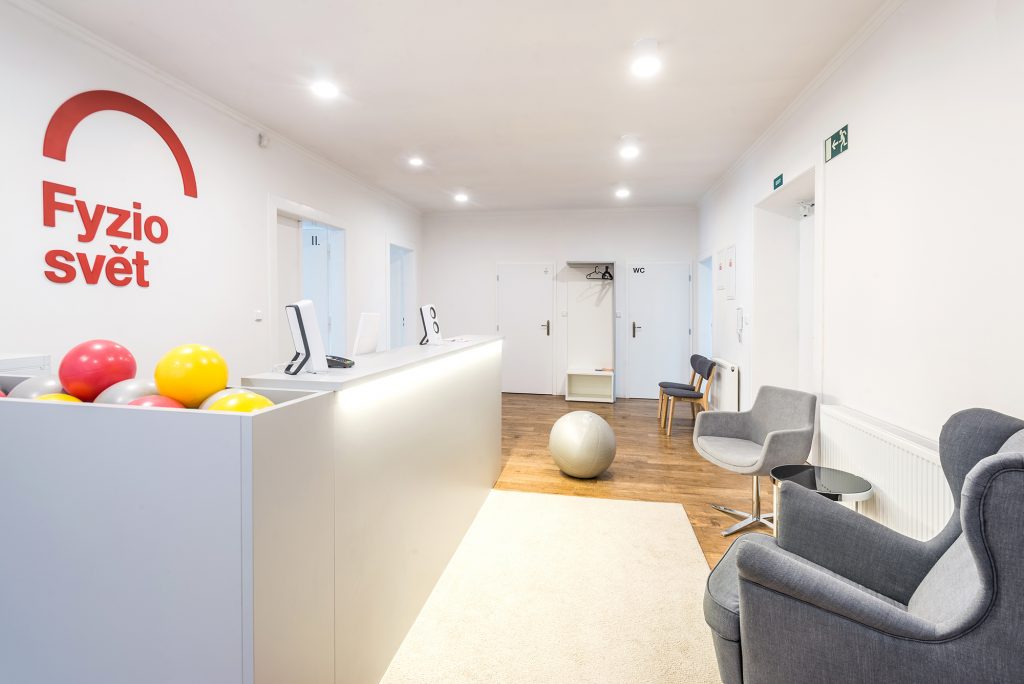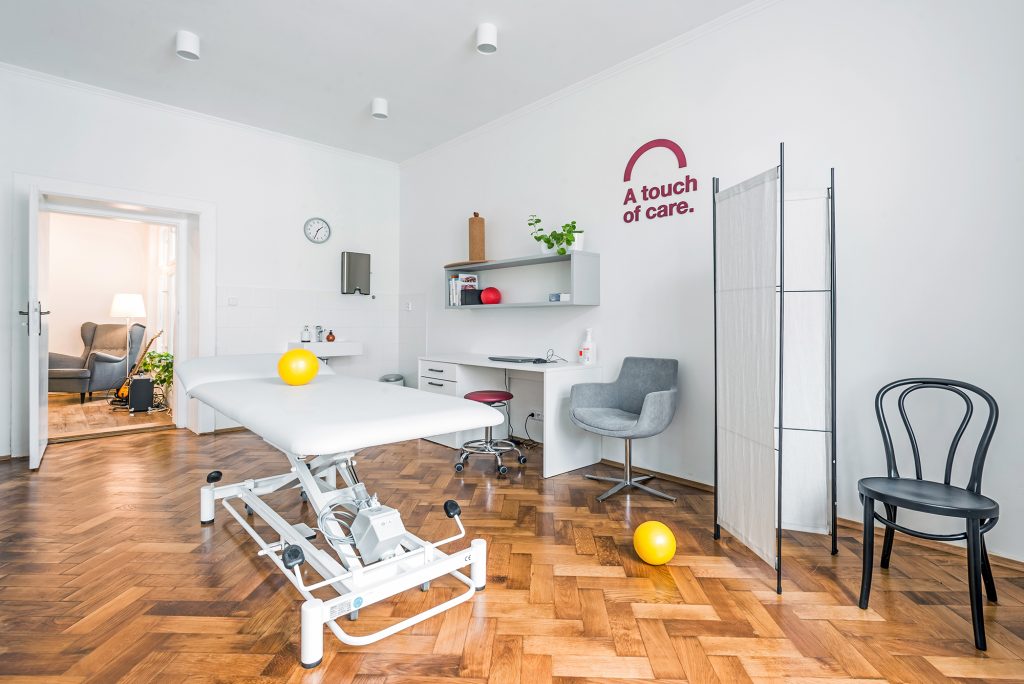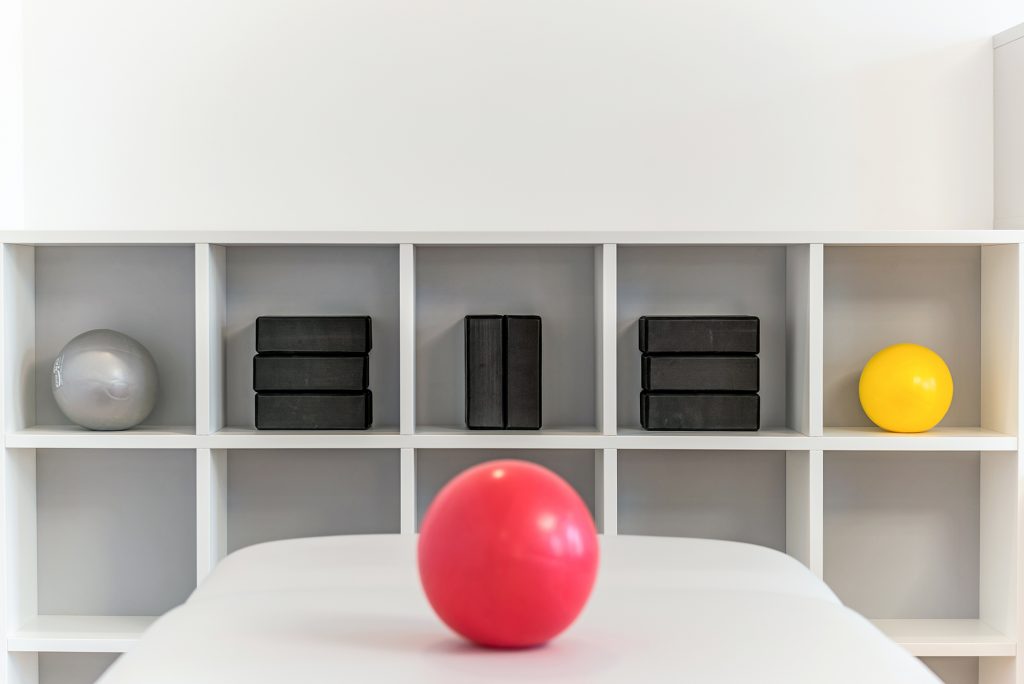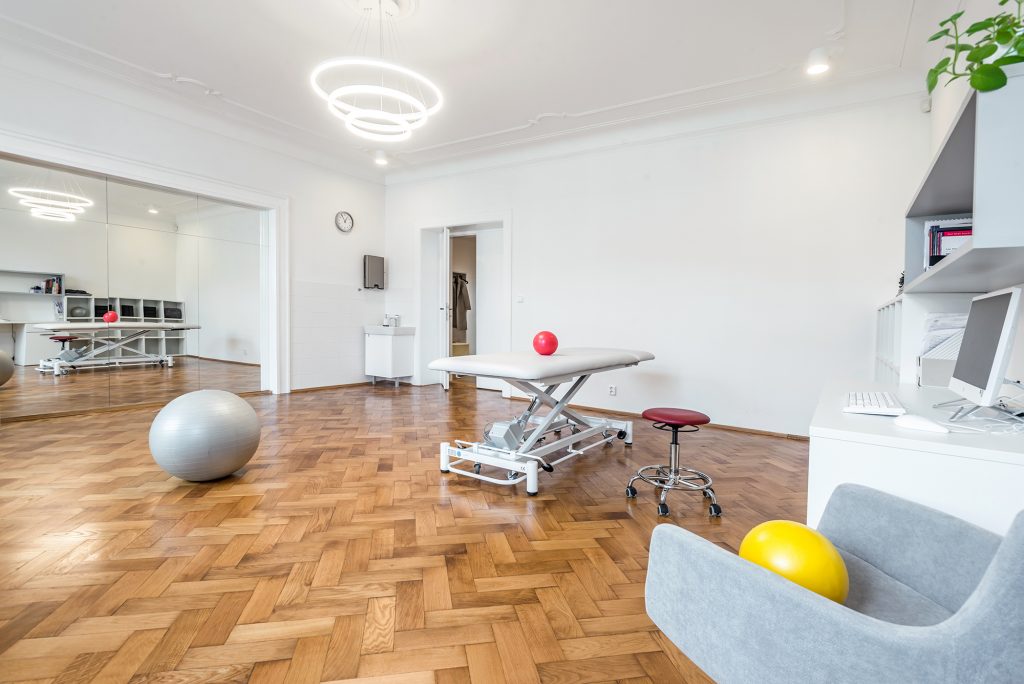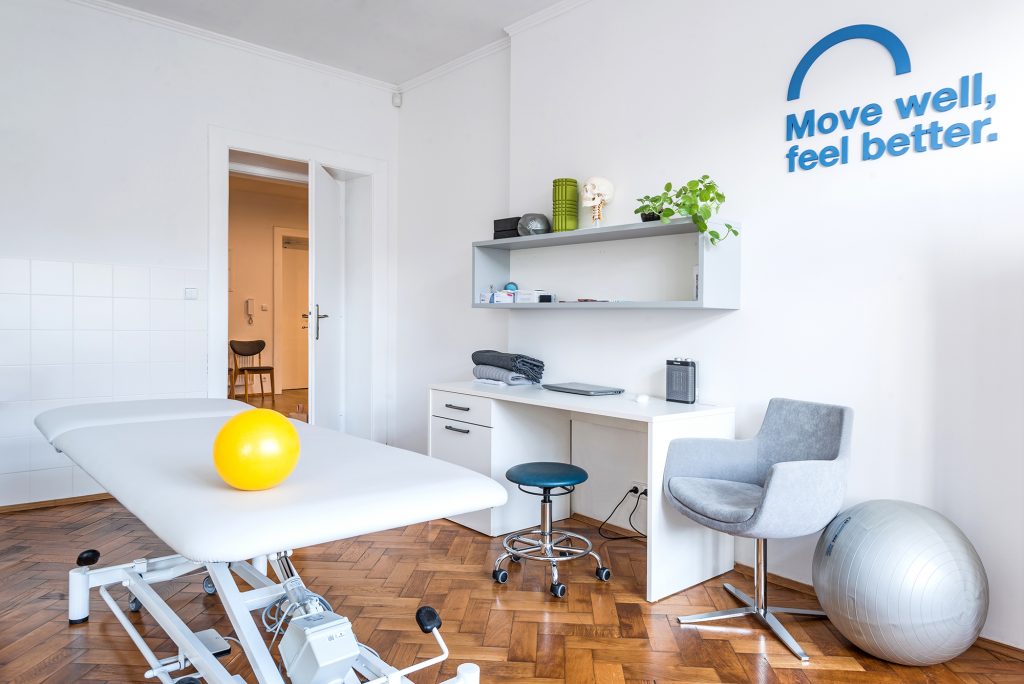Hallux Valgus (Bunion) and Its Functional Treatment
A solid support is the foundation of movement
Have you ever thought about how you walk? Try walking barefoot at home and notice which parts of your foot you put pressure on. You’ll find that the first contact with the ground happens through the heel, and the last one is through your big toe. For proper walking, you need a stable heel, a flexible forefoot, and strong toes to push you forward into the next step. If the final push from the big toe is missing, the impulse for the next step comes from the hip joint instead of the foot itself. The toe’s inability to roll and push off must be replaced by a less efficient movement strategy, which over time, can manifest not only in a painful big toe but also in other parts of the body. Let’s explore what hallux valgus is and share some tips on how to work with it.
Hallux Valgus Affects the Knee, Hip, and Back
Hallux valgus is one of the most common deformities of the human foot, causing significant discomfort for many clients. It is a progressive deformity affecting the big toe joint, often accompanied by functional impairments, pain, and a reduced quality of life over time. With hallux valgus, the first metatarsal bone turns inward, altering the shape of the joint surfaces, which causes the big toe to turn inwards. As a result, the toe is displaced from its natural position, pointing toward the other toes. This misalignment prevents the big toe from functioning properly during standing and walking, affecting the entire foot. The inefficient stepping and push-off further extend to higher structures like the knees, hips, or spine. The outcome is pain during movement and difficulty finding suitable footwear. Inappropriate shoes can contribute both to the formation of hallux valgus and to the irritation of tissues around the joint, leading to swelling and increased pain. The condition is more common in women, with a ratio of 8:1, and its occurrence increases with age.
Factors that May Lead to Hallux Valgus:
- Inappropriate footwear, such as shoes with narrow toe boxes, high heels, or stiff soles
- Injury to the toe or any trauma that changes the foot’s load distribution
- Issues with the foot arch, hammer toes, or foot shape
- Hormonal changes – puberty, pregnancy, menopause
- Prolonged static load
- Genetic predisposition, joint laxity
- Osteoarthritis
Hallux Valgus and Its Stages
In the early stage, the big toe shows only a slight deviation from its axis. The joint of the big toe starts to protrude visibly, and there are signs of inflammation (pain, swelling, redness, localized heat). The second stage is marked by a noticeable valgus deviation of the toe. In the third stage, the head of the metatarsal bone shifts significantly inward, with a marked shortening of the outer and lengthening of the inner joint structures. In the final stage, the second and third toes overlap with the big toe, and soft tissue contracture is severe.
As the deformity progresses, pain increases, especially with prolonged standing and walking. All physical activities become more difficult, the walking pattern changes, and the range of motion in the big toe decreases.
How We Treat Hallux Valgus at Fyzio World
The treatment of hallux valgus includes exercises, manual therapy, and practical advice to improve your quality of life. We create a treatment plan tailored to your specific symptoms. Our shared goal is to improve the function of your ankle, foot, and toes, reduce pain, and enable you to move freely again.
Shockwave Therapy, Laser, or Kinesio Tape May Help
Your physiotherapist will work with you to identify and change external factors causing pain. They may review exercises you already perform, your sports activities, and advise you on footwear. We will address your pain and create a program that could include shockwave therapy, the BTL 6000 HIL2 laser, kinesio taping, and other effective methods. These techniques efficiently reduce pain and the need for medications. We will also teach you how to properly exercise and stretch. The exercises we create for you won’t just “strengthen” your big toe but will involve a comprehensive diagnosis of your entire body to uncover any weak points.
Manual Therapy Gently Mobilizes Muscles and Joints
For a lasting effect, we work on creating muscular and movement harmony to prevent one-sided overloading. Once your pain, strength, and mobility improve, you can gradually return to more demanding activities. All of this is continuously supported by manual therapy, which gently mobilizes your muscles and joints. All the techniques we use help to improve mobility, strength, and often target areas that are hard to treat on your own.
Targeted Physiotherapy for the Foot’s Arch
Our foot has two longitudinal and one transverse arch. Their function is to provide the foot with flexibility and support the entire body. The big toe forms the endpoint of the longitudinal arch and the starting point of the transverse arch. It is the only joint in the foot that holds significance for both arches. In hallux valgus treatment, we focus on the shape of the entire foot and work on enhancing its function. This is why it is crucial not to overlook working with the arches, the ligament system, and the muscular apparatus of the foot. This increases the chances of successful treatment for hallux valgus.
Surgery as a Last Resort
Even physiotherapy and conservative treatment have their limits. In advanced stages of deformity, we recommend consulting with orthopedic specialists, and if necessary, consider surgery. After surgery, quality rehabilitation should be conducted to restore the foot’s function and prevent the problem from recurring.
Your Common Questions About Hallux Valgus
Can I straighten my toe with exercises?
Yes, but… It depends on the stage of the hallux valgus and how diligently you follow your exercise plan. If the toe can be manually realigned, meaning it can be brought into alignment, there’s a functional change, and following the treatment plan gives a good chance of success. If the change is structural and the toe cannot be corrected, aesthetic straightening may not be possible. However, with exercises, you might eliminate or reduce pain while walking, improve foot mobility, balance, and protect the rest of the body from overloading.
What footwear is suitable?
Good shoes have a sufficiently wide toe box, allowing all your toes to rest comfortably. They should also have flexible soles that allow the foot to adapt to the terrain. Comfortable shoes shouldn’t pinch anywhere when walking. As for “smart” shoes, it depends. If you frequently walk on rough terrain (and have strong ligaments), barefoot shoes might be suitable for you. However, if you’re hypermobile, mostly walk in cities, and experience foot or toe pain, other solutions like arch supports or insoles may be better.
Can orthotic insoles help with hallux valgus?
Yes, but they must be custom-made for the client. It’s also important to view insoles as a supplementary therapy, a passive support for the foot that helps during walking. In the long term, it’s crucial to exercise the foot and harmonize its movements (building your own support from muscles).
Can a toe corrector help with hallux valgus?
Using a toe corrector makes sense in certain cases. It can be considered if the deformity is in its early stages, the toe is flexible, and the corrector can realign it. However, if the toe is too stiff, using a corrector might push other toes out of alignment, in which case it’s not suitable. Correctors can’t cure the deformity; they primarily provide pain relief rather than functional correction.
Tips and Advice from a Physiotherapist
- Don’t just exercise the toe. Exercise the whole foot. It’s important to remind all the joints and muscles how to work together.
- Improve mobility. Use one hand to hold the base of the big toe joint and stabilize its position. With your other hand, lightly move the big toe side to side, bending and straightening it, or gently rotating it.
- Relax. Place your foot on a tennis ball or a spiked ball, transfer some weight onto it, and massage the sole by moving the foot along the ball. Ensure that the movement comes from the knee, and keep the foot centered, with the ball rolling along the middle of the foot between the second and third toes.
- Create space in your foot. Weave the fingers of the opposite hand between your toes and gently bend and spread them apart.
- Toe alignment socks. These socks help relax the soft tissues of the foot and improve circulation. They’re designed to aid overall relaxation while sitting, lying down, or sleeping, not as walking aids.
- Natural movement—walk barefoot. Start for short periods and gradually increase the time. Walk on various surfaces, in different terrains, and alternate between different surface temperatures. This toughens your feet, wakes them up, improves circulation, and provides necessary stimuli and information, which helps with any foot-related issues.
- Play around. You can compete with your kids to see who can pick up LEGO blocks with their toes or roll up a towel. This wonderfully trains the foot’s gripping function, helping to shape the foot with the use of small muscles.
- Don’t ruin your treatment with inappropriate footwear. Your shoes must have a spacious and wide toe box. Otherwise, the “bunion” and the “protruding joint” will continue to grow. You need enough room to avoid pressure on the joint, which can cause blisters.
- Awareness. Stand barefoot on the ground and feel the contact points with the floor. Your foot should be evenly loaded on the heel, the base of the big toe, the base of the pinky toe, and the tips of your toes. If this is not the case, gently bend your knees, straighten up, breathe freely, and slowly try to load the correct support points on your foot. You can imagine that you’re gently pressing the floor down into the ground as if you want to make “dents” in it.
- Corrective taping. In mild to moderate deformities, kinesiology taping is very effective in correcting the big toe’s position for several days to weeks. The result is a reduction in the angle of the deformity, decreased or eliminated pain, and improved walking quality.
